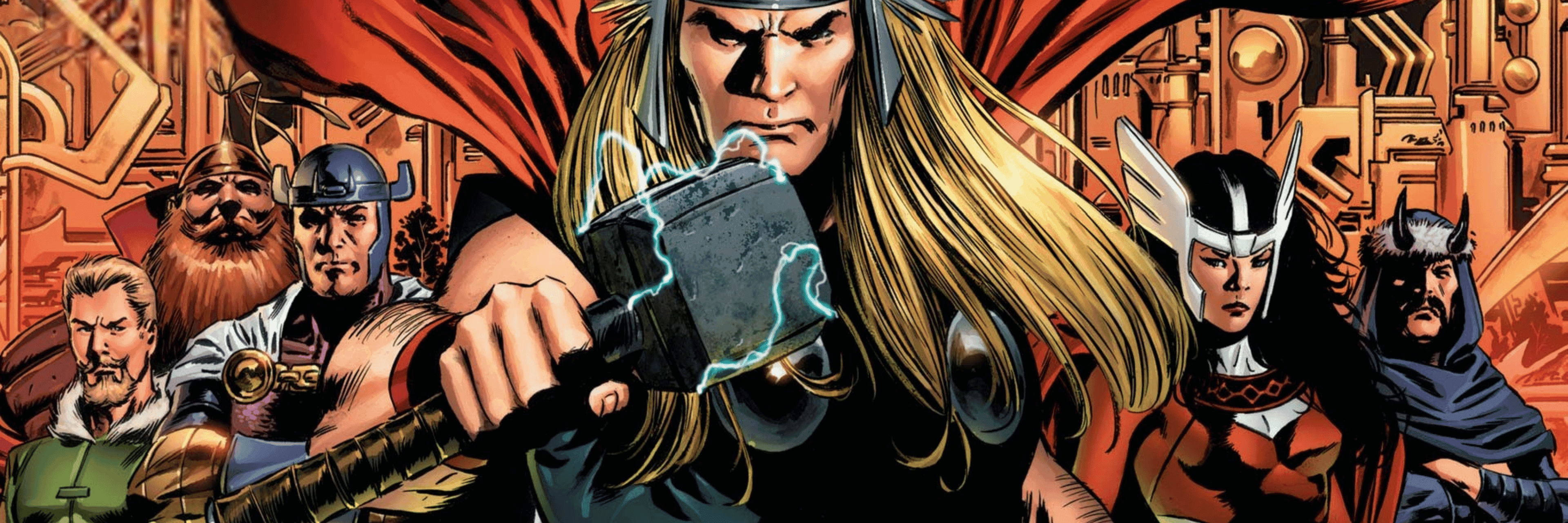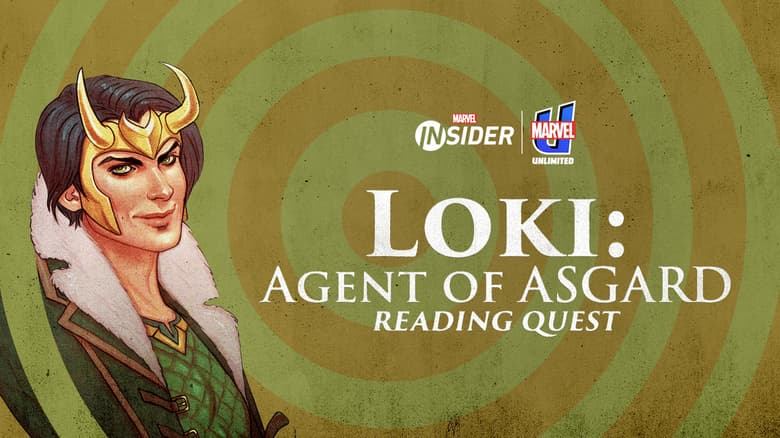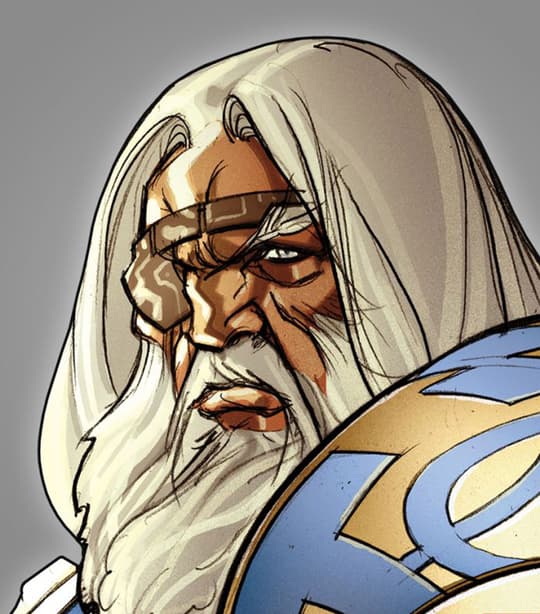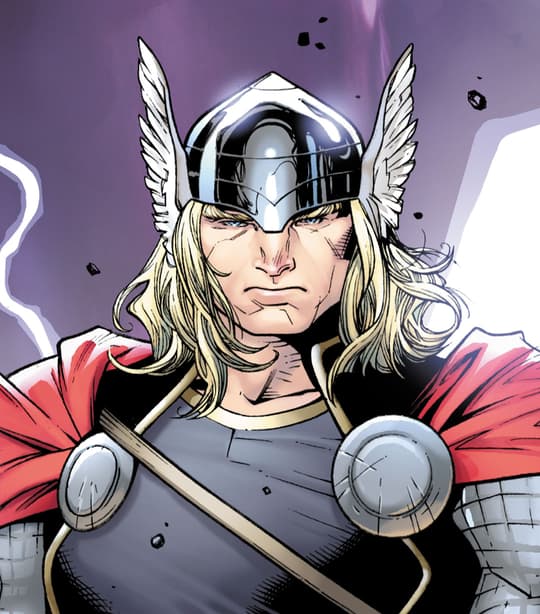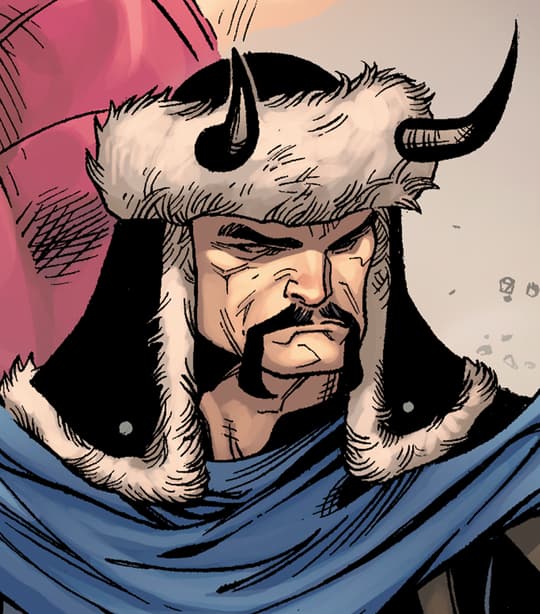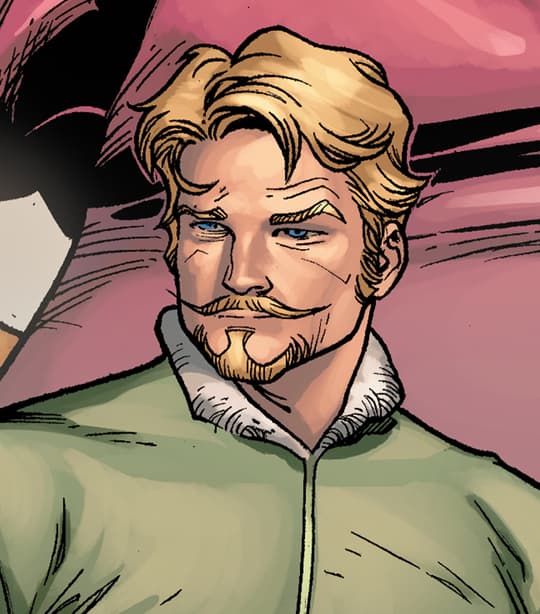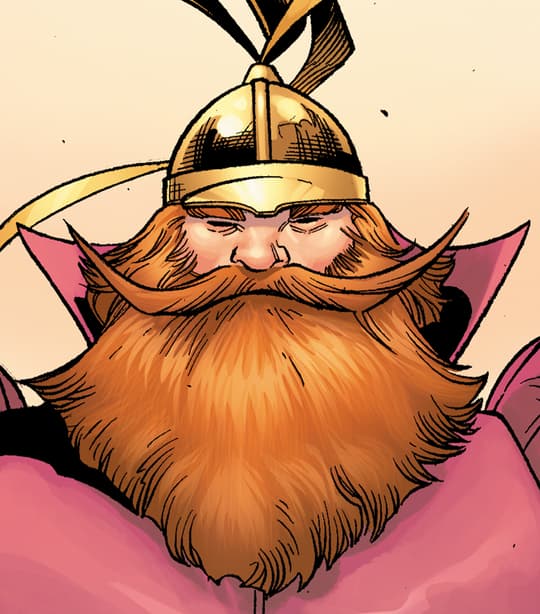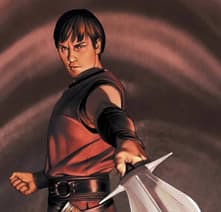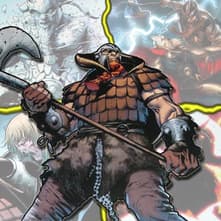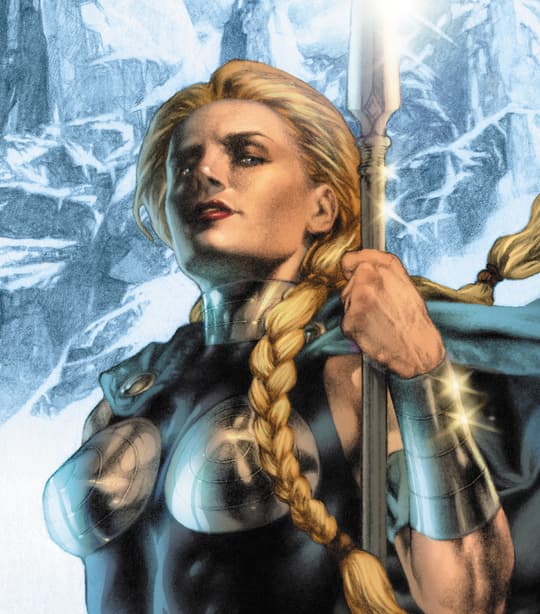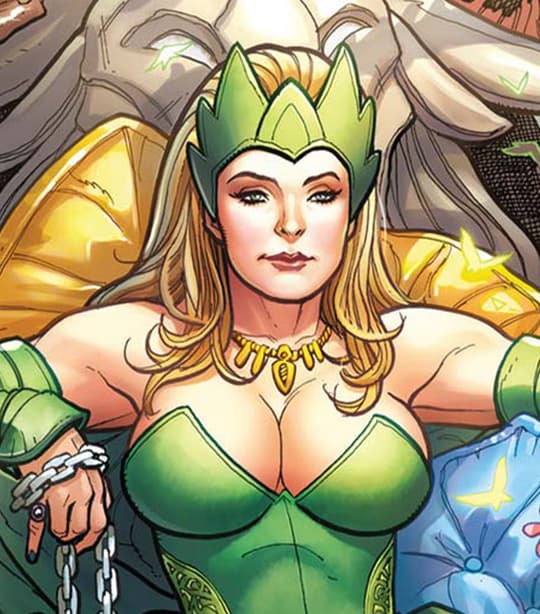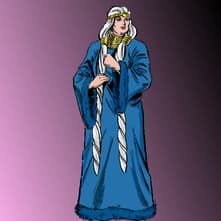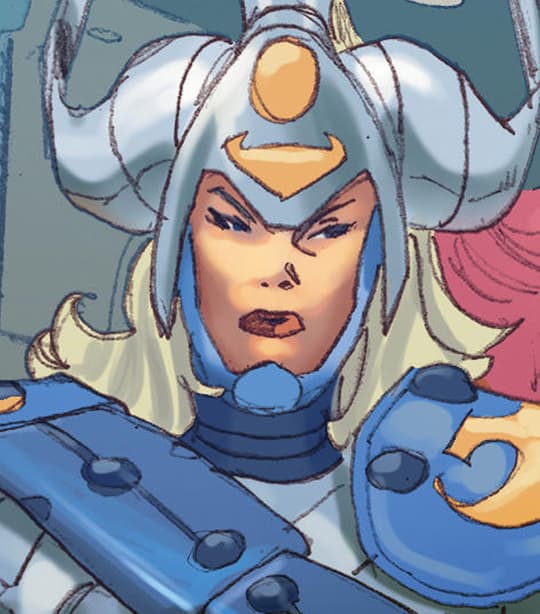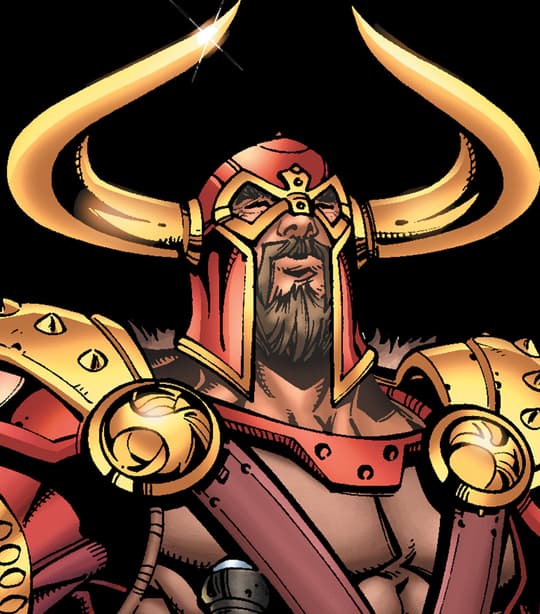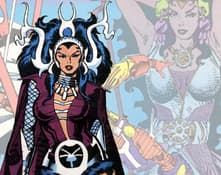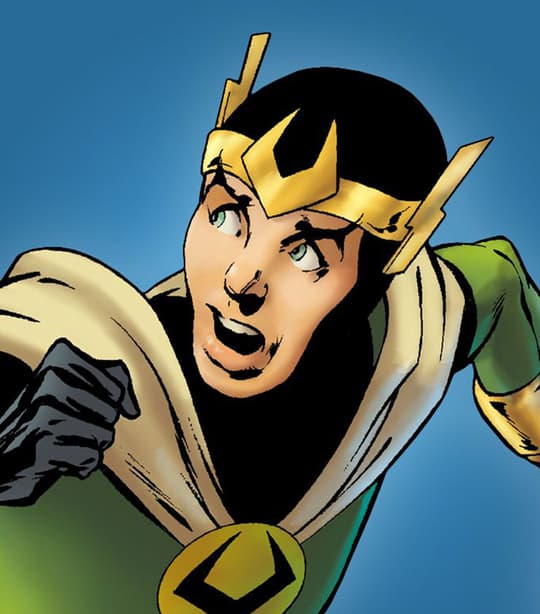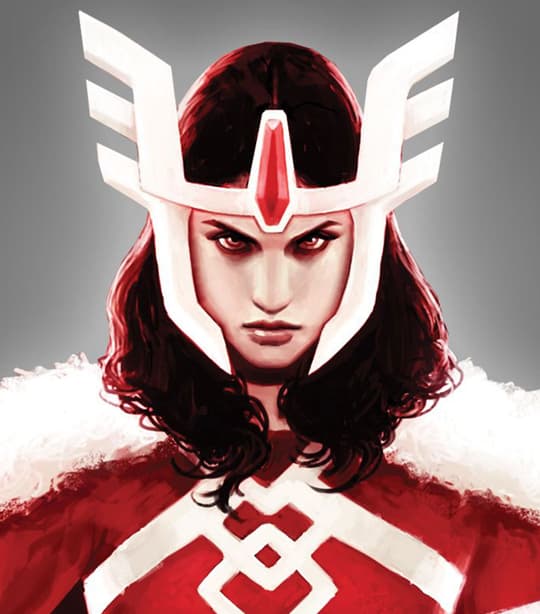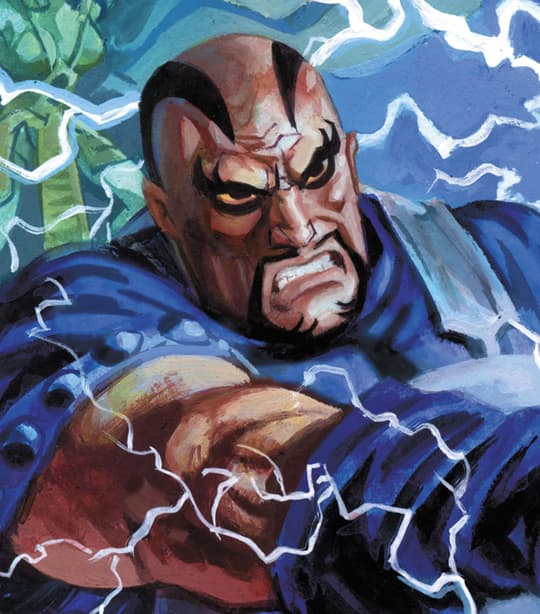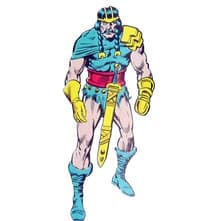History
History
Legend Has It
Between the mystical and cyclical natures of the Asgardians, accounts vary on exactly how they come to be. Some stories state that they and the rest of the Ten Realms are born from the release of energies following the Demogorge attack on the Elder Gods. Another states that everything springs from Ginnungagap, the primordial nothingness. From there, the magical cow Audumbla licks the ice of the Well of Life, eventually uncovering Buri, the first of the Asgardian gods. He and his Frost Giant wife begat Bor, Mimir and Njord. Bor takes over as the leader and has Cul, Odin, Vili and Vi with his giantess wife Bestia. He also establishes Asgard followed by his people, the Aesir. After ages of bitter feelings, Vanaheim was annexed by Asgard, so Njord begins fathering the Vanir gods of Vanaheim. The groups collectively become known as Asgardians and are virtually indistinguishable.
The Way of the Warriors
Functionally immortal, the Asgardians (AKA Norse, Germanic or Teutonic gods) age at an extraordinarily slow rate upon reaching adulthood and are nearly impossible to kill, but are known to perish on occasion. Those who perish during war are taken to Valhalla by the Valkyries while the others go to the land of the dead known as Hel, overseen by the death goddess Hela. The dishonored dead, in particular, are sent to Niffleheim. These mystical beings benefit from the consumption of Golden Apples, harvested by the goddess Idunn, which keep them powerful and long-living.
Average Asgardians have denser bones and skin than a human's, which makes them resistant to diseases and injury. They also possess superhuman healing, endurance and reflexes. Only dispersal of a major portion of an Asgardian’s bodily molecules will cause death, and even then resurrection via other gods may be possible. Asgardian flesh and bone are three times denser than human tissue, and average gods and goddesses can lift about 30 and 25 tons, respectively. Some have additional powers based on their deity designation, such as the god of speed Hermod who moves at great speed and Thor Odinson, AKA Thor, being the God of lightning and storms.
Asgard is a warrior culture, so most citizens are trained in combat and are more than willing to pick up a weapon—often a signature one—to defend the realm. Their battles occasionally play a role in the apocalyptic battle Ragnarok, also known as the Twilight of the Gods, a cycle that sees the Asgardians perish only to be reborn again with varying degrees of knowledge of their previous lives. This recurring theme in Asgardian life is overseen by the mysterious gods known as Those Who Sit Above In Shadow, who draw power from this cycle. The Asgardians’ continued existence is tied to the health of the world tree Yggdrasil, which connects the ten worlds of the realm of Asgard. Their destinies are written in the spinning fabric of the Norns.
The Ten Realms and Beyond
Asgard is one of ten realms connected to the world tree Yggdrasil and has a variety of dealings with them all. They are often allies with the Light Elves of Alfheim, the dwarves of Nidavellir, and the old gods of Vanaheim. However, conflict seems near-constant with the fire demons of Muspelheim, the Frost Giants of Jotunheim, and the Dark Elves of Svartalfheim. Asgard does business with the Angels of Heven until their betrayal leads Odin to banish the entire realm. Hel remains the land of the dead and its sister realm, frigid Niffleheim. Another realm is Midgard, where the people of Earth worship the Asgardians as gods, and are thrilled by their adventures in more modern times. They also have dealings beyond the Ten Realms with the Celestials, the Shi'ar and other Pantheons, including the Olympians.
Base of Operations
- Asgard
Current Members
- Odin,
- Thor (Thor Odinson),
- Hogun,
- Fandral,
- Volstagg,
- Hildegarde,
- Angela (Aldrif Odinsdottir),
- Balder,
- Bor,
- Valkyrie (Brunnhilde),
- Enchantress (Amora),
- Frigga,
- Freyja,
- Heimdall,
- Hela,
- Karnilla,
- Loki,
- Sif,
- Executioner (Skurge),
- Tyr

Tending the Asgardians
One story goes that, upon Bor's death, Cul became the All-Father. He installed his own lieutenants called the Worthy and began a brutal campaign against anyone who stood in his way. Yggdrasil itself told Odin he needed to dispatch his brother who had taken up residence on Aesheim. He wiped his brother out and all of his followers on that planet which was razed and renamed Midgard.
In another telling, Odin and his brothers Vi and Vili fought and killed Ymir the Frost Giant king and used him to create Midgard (Earth). Odin wanted to take the throne for himself and received some assistance from unusual sources. First, a time-traveling Loki Laufeyson, AKA Loki, turned Bor into snow and then Vili and Vi sacrificed themselves to allow Odin to escape after they destroyed Surtur's Twilight Sword and stole the Eternal Flame. As the sole member of the royal family, he ascended the throne, established the Odinpower and has ruled for the majority of time since.
When the All-Father attempted to bring together the Aesir and the Vanir, a war broke out that came to an end when the two groups united by way of Odin marrying Frigga, AKA Freyja, the daughter of Vanir leader Freyr. This union ended the war, brought the tribes together and eventually led to the birth of a daughter named Aldrif Odinsdottir, AKA Angela.
Odin never lost his affinity for Midgard and even claims to have created the first humans there. Eventually the Bifrost, the Rainbow Bridge, was constructed so that Asgardians could easily visit. These encounters with early humanity lead to many Asgardians being worshiped as He even made a deal with the Angels of Heven to protect the beings of the realm. However, the Angel queen made a deal to betray Odin and a brutal war between the realms broke out. An Angel managed to kidnap Aldrif and attempted to use the babe as a bargaining chip. When Odin refused, the kidnapper made it seem as though she killed the child which resulted in the devastated father not just unleashing his massive power, but using it to prune Heven from Yggdrasil.
Some time later, Odin fathered Thor with Gaea, the Elder God and goddess of Earth. Shortly after that, Odin declared war on the Frost Giants and led the Asgardians into Jotunheim against Laufey's people. The All-Father not only defeated their king, but also stole the baby Loki, deciding to raise him as his own alongside Thor. The lightning lord grew up and was eventually banished to Midgard by his father with an enchanted Mjolnir and a secret identity in Dr. Donald Blake. The move was intended to teach the brash young warrior humility. It also gave humanity their first real dose of Asgardian might in centuries as Thor became not just a Super Hero in his own right, but a founding member of the Avengers.
This more recent era also brought a variety of threats and challenges to Asgard. Mangog nearly destroyed the place, Loki—who had learned of his true nature and learned powerful dark magic —attempted to take the throne several times and the combined efforts of Surtur and Malekith to bring about Ragnarok. The Asgardians have also taken up arms against Seth and the Dark Gods, but ultimately fell to Ragnarok after Thor discovered Those Who Sit Above In Shadow and attempted to break the cycle of the Twilight of the Gods.
The Odinson perished, went to a limbo dimension and was soon reborn on Midgard where he came to understand that the Asgardians had become reborn in mortal forms. He not only established a new Asgard floating above Broxton, Oklahoma, but also used Mjolnir to wake the Asgardians back up. They relocated to Latveria for a time thanks to Loki conspiring with Victor Von Doom, AKA Doctor Doom. This was part of Doom's plan to experiment on Asgardian subjects. When discovered, a battle broke out and the nation returned to Oklahoma where Norman Osborn, AKA Green Goblin, led forces against the Asgardians. The siege was unsuccessful, but led to a great deal of death and destruction.
After a harrowing battle with the dark god Earth Eaters, the Asgardians defended the World Tree Seed from Galactus and then dealt with the return of Odin's secret brother Cul, the Serpent. After defeating his brother, Odin took Cul back to Asgard-Space and made everyone else leave. Back on Earth, Freyja, Gaea and Idunn began leading their people as the All-Mother. They attempted to restructure themselves into Asgardia, which would work with the realms differently than before by establishing the Congress of Worlds. Tony Stark, AKA Iron Man, assisted in the construction of the new Asgardia. They soon fended off an attack from the king of the Trolls and the Queen of the Norns, and then another attack by Surtur.
After Malekith the Dark Elf escaped from imprisonment and began sowing the seeds for the War of the Realms, All-Mother Freyja realized that Asgardia presented too much of a danger to the surrounding citizens of Midgard. With that, the Asgardians took off in the floating city, hovering near Earth's moon around the the time that the Odinson became unworthy of Mjolnir and Jane Foster became the new Thor. Around this same time, Angela and the Angels of Heven were revealed to still exist. This was a dark time for the Asgardians because Jane's tenure as Thor had driven Odin partially mad to the point where he had Freyja jailed. This rift lead to a civil war between those loyal to both parties that only came to an end with Loki stabbed Freyja, though he claimed to have done it to save her from Malekith's machinations.
Though Old Asgard was nearly razed by another battle with Mangog who then tore through Asgardia. While Odin returned to the old realm the others remained on Asgardia, but they would soon be fully embroiled in the War of the Realms against Malekith and the Dark Elves, Sindr's fire demons, the Frost Giants and Roxxon's forces. Allied with the Light Elves, Dwarves, Old Gods, and the heroes of Earth, the Asgardians prevailed and Thor was declared king. Under his leadership, the Asgardians returned to the realm of Asgard and continue to find a balance between everyday life and defending any number of realms!
